Books
 Captives of War. British Prisoners of War in Europe in the Second World War (Cambridge University Press, 2017)
Captives of War. British Prisoners of War in Europe in the Second World War (Cambridge University Press, 2017)
This pioneering study explores the experiences and emotional lives of British prisoners of war in Germany and Italy during the Second World War. It was a Runner-Up in the 2018 Society for Army Historical Research Templer Best First Book Prize. Reviews to date of Captives of War are listed here.
Book chapters
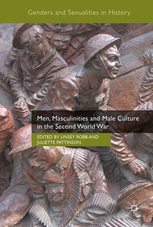 ”Pinky Smith looks gorgeous!’ Female impersonators and male bonding in prisoner of war camps for British servicemen in Europe’ in Men, Masculinities and Male Culture in the Second World War (eds) Juliette Pattinson and Linsey Robb (Palgrave Macmillan, 2017)
”Pinky Smith looks gorgeous!’ Female impersonators and male bonding in prisoner of war camps for British servicemen in Europe’ in Men, Masculinities and Male Culture in the Second World War (eds) Juliette Pattinson and Linsey Robb (Palgrave Macmillan, 2017)
Female impersonators were a familiar sight in prisoner of war (POW) camps, appearing in theatre productions, at dances, at tea parties as ‘waitresses’ and in auctions to raise money for welfare funds. This essay explores British POWs’ reactions to them, as an insight into conceptions of sexuality and gender during the Second World War.
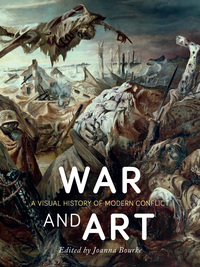 ‘Drawn in Blood and Bone. The Art of Captives of War’, in Art and War (ed.) Joanna Bourke (Reaktion Books, 2017)
‘Drawn in Blood and Bone. The Art of Captives of War’, in Art and War (ed.) Joanna Bourke (Reaktion Books, 2017)
Art was a vital and integral part of many prisoners of war and civilian internees’ experiences behind barbed wire but historians of captivity have yet to give art the same prominence as word-based sources in their research. This chapter proposes four interpretative categories designed to help historians think about how works of art can further our understanding of the experience of captivity.
Journal articles
 Going “round the bend” in prisoner of war camps, The Lancet, 390, 10101, 23 September 2017, p1483–1484
Going “round the bend” in prisoner of war camps, The Lancet, 390, 10101, 23 September 2017, p1483–1484
This feature looks at the mental disturbances that British POWs held in Germany and Italy in the Second World War experienced whilst behind barbed wire.
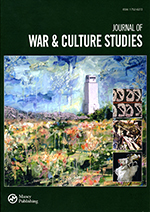 For ‘ALL who were captured’? The evolution of national ex-prisoner of war associations in Britain after the Second World War’, Journal of War and Culture Studies, 7, 3 (August, 2014).
For ‘ALL who were captured’? The evolution of national ex-prisoner of war associations in Britain after the Second World War’, Journal of War and Culture Studies, 7, 3 (August, 2014).
Veterans associations after the Second World War have received very little attention from historians despite the insight they can provide into postwar societies. This article draws upon the literature published by national ex-prisoner of war (POW) associations formed in the aftermath of the Second World War to examine the significance different groups of British ex-POWs attached to their wartime incarceration.
All existing histories on the lives of British POWs in Germany and Italy during the Second World War focus inwards on life in the prison camps. This article looks outwards, beyond the barbed wire. It examines the material exchange of letters and parcels between prison camp and home, as well as how home was conceived in P.O.W.s’ imaginative realms, to demonstrate the importance of loved ones in enabling prisoners to make sense of their captivity. It also shows how this dependence resulted in the reconfiguration of P.O.W.s’ roles within their families.
Magazines and newspapers
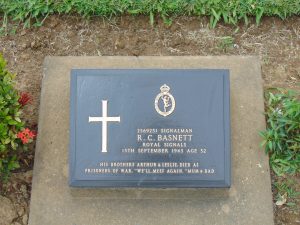 Railway to Hell, History Today (February 2019), pp.72-83
Railway to Hell, History Today (February 2019), pp.72-83
This articles looks at the war graves of POWs who died on the Thai-Burma railway, and how their loved ones made sense of their loss.
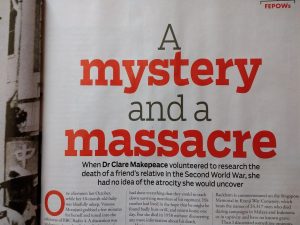 A mystery and a massacre, Who Do You Think You Are? magazine (June 2018), pp.22-26
A mystery and a massacre, Who Do You Think You Are? magazine (June 2018), pp.22-26
This article explores the captive experiences of Lieutenant Arthur Wray Rackham. He died as a prisoner of the Japanese but his family knew nothing about what he went through. I uncovered his links to a massacre of POWs on Ballale Island.
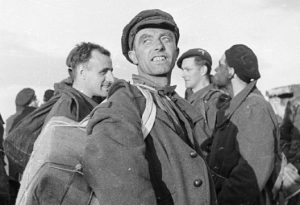 Bringing home World War Two’s ‘awkward lot’, The Psychologist, 31 (April, 2018), pp.82-85
Bringing home World War Two’s ‘awkward lot’, The Psychologist, 31 (April, 2018), pp.82-85
This article examines the use of Civil Resettlement Units and their possible lessons for today.
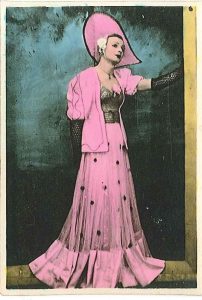 ‘Just like the Real Thing’, History Today (December, 2017), pp. 36-47.
‘Just like the Real Thing’, History Today (December, 2017), pp. 36-47.
This feature looks at the release servicemen found in female impersonation in POW camps in Europe in the Second World War.
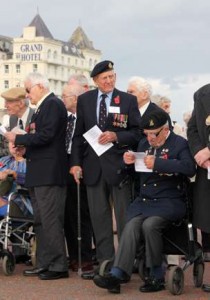 VJ Day: Surviving the horrors of Japan’s WW2 camps (15 August 2015)
VJ Day: Surviving the horrors of Japan’s WW2 camps (15 August 2015)
This feature tells the remarkable story of the spirit and courage of Far East POWs, which they demonstrated both during the war, and again in peace.
 ‘Compensating the Railway Men’, History Today (April, 2014).
‘Compensating the Railway Men’, History Today (April, 2014).
This article sheds light on an aspect of Far East POWs’ lives that historians have ignored and relatives largely forgotten: the ‘Claim’ for compensation. From the late 1940s, Far East ex-POWs in Britain vociferously campaigned for compensation for their treatment during incarceration in the Second World War and eventually received payments, totalling the equivalent of about £1500 in today’s money.
Blogs
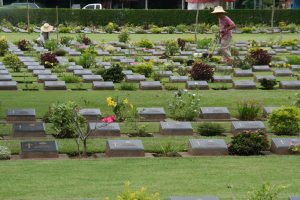 POW War Graves in Thailand (January 2019). This blog discusses the background to my research into POW war graves in Thailand.
POW War Graves in Thailand (January 2019). This blog discusses the background to my research into POW war graves in Thailand.
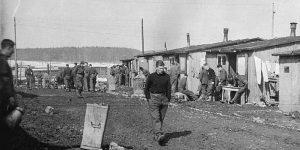 ‘Civil Resettlement Units – a lesson from the past’, Defence in Depth, (December 2018). This blog discusses how Civil Resettlement Units are relevant today.
‘Civil Resettlement Units – a lesson from the past’, Defence in Depth, (December 2018). This blog discusses how Civil Resettlement Units are relevant today.
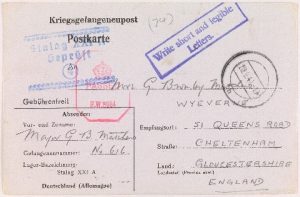 ‘Correspondence as a historical source’, Institute for Historical Research (August 2018). This blog discusses how I used POW correspondence in my research.
‘Correspondence as a historical source’, Institute for Historical Research (August 2018). This blog discusses how I used POW correspondence in my research.
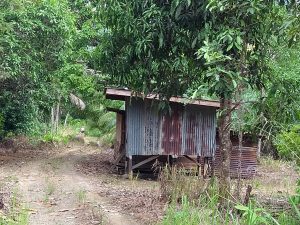 ‘Cycling the Sandakan Death March’, Researching FEPOW History Group (July 2018). This blog is about my trip to Borneo and retracing the steps of British and Australian POWs imprisoned there.
‘Cycling the Sandakan Death March’, Researching FEPOW History Group (July 2018). This blog is about my trip to Borneo and retracing the steps of British and Australian POWs imprisoned there.
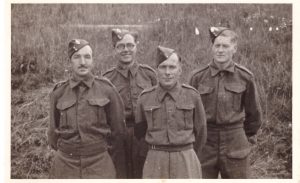 ‘Life behind the barbed wire fence’, fifteeneightyfour. Academic Perspectives from Cambridge University Press (October 2017)This blog reveals how my grandfather inspired my book on prisoners of war.
‘Life behind the barbed wire fence’, fifteeneightyfour. Academic Perspectives from Cambridge University Press (October 2017)This blog reveals how my grandfather inspired my book on prisoners of war.
Book reviews
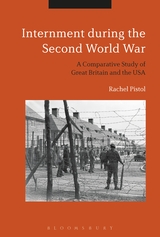 Internment during the Second World War. A Comparative Study of Great Britain and the USA, by Rachel Pistol, American Historical Review
Internment during the Second World War. A Comparative Study of Great Britain and the USA, by Rachel Pistol, American Historical Review
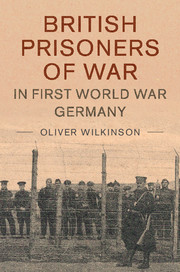 British Prisoners of War in First World War Germany by Oliver Wilkinson, Michigan War Studies Review
British Prisoners of War in First World War Germany by Oliver Wilkinson, Michigan War Studies Review
 Prisoners of the Sumatra Railway by Lizzie Oliver, Journal of Contemporary History, 54 (1), 2019, pp.219-220
Prisoners of the Sumatra Railway by Lizzie Oliver, Journal of Contemporary History, 54 (1), 2019, pp.219-220
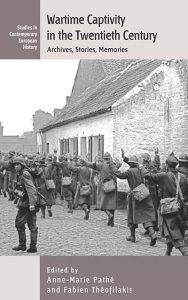 Wartime Captivity in the Twentieth Century: Archives, Stories, Memories, edited by Anne-Marie Pathé and Fabien Théofilakis, History: Reviews of New Books, 45 (5), 2017, p. 134
Wartime Captivity in the Twentieth Century: Archives, Stories, Memories, edited by Anne-Marie Pathé and Fabien Théofilakis, History: Reviews of New Books, 45 (5), 2017, p. 134

